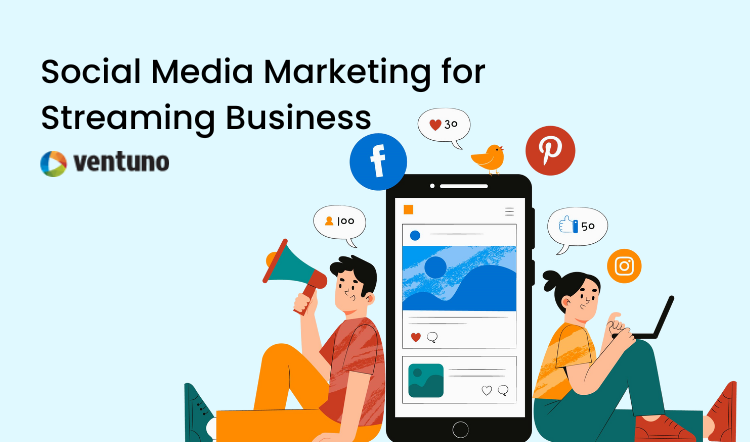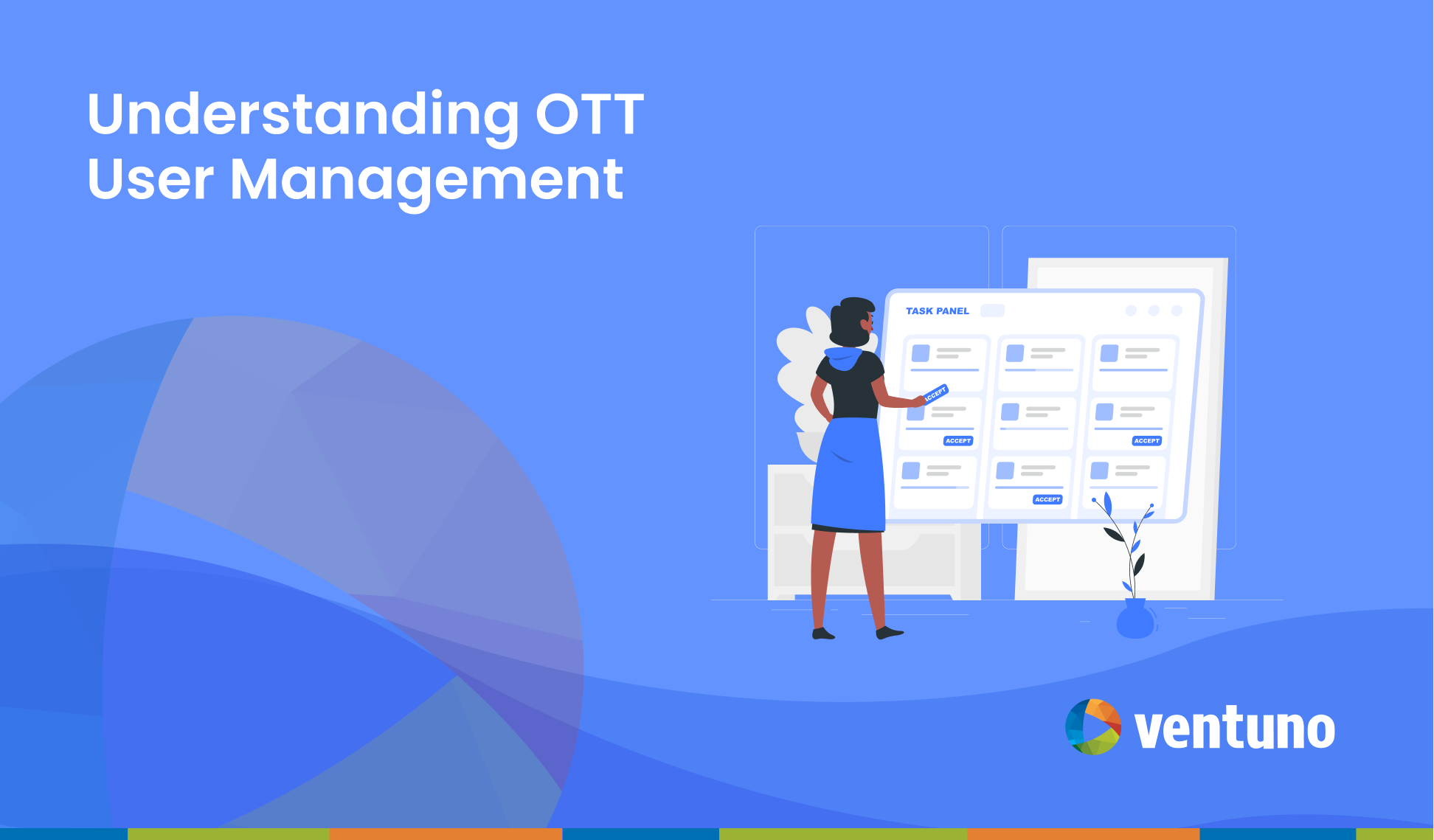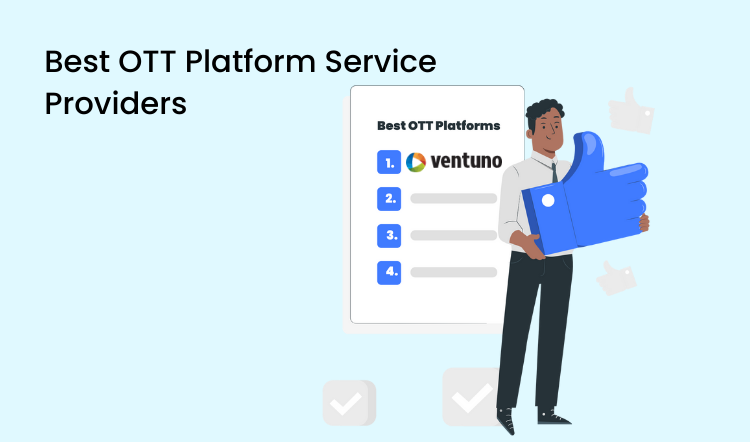SaaS vs. On-Premise: Why Streaming Services Should Choose SaaS Model?
Last Updated on May 27, 2025 by Anjana Devi
Building a streaming service from scratch can be challenging. You will have to acquire knowledge related to infrastructure, cost, and time-to-market.
One big decision you will have to make is choosing between a SaaS (Software as a Service) and on-premise/on-cloud model.
You need to carefully evaluate which model best suits your needs, especially in a competitive market where agility, cost-efficiency, and rapid feature deployment are key.
In this blog, we will talk about why the SaaS model is often the best choice for streaming services, focusing on cost-effectiveness, the efficiency of feature development, and the hidden costs associated with on-premise/on-cloud models.
Why is SaaS Cost-Effective?
Let’s say you want to get fit and you have decided to exercise everyday.. You have two options:
Option 1: Buy treadmills, weights, and other equipment. You’ll need space, electricity, and maybe even a trainer. This requires a big upfront investment and ongoing costs for maintenance.
Option 2: Pay a monthly fee for access to all equipment, training, and a clean space. No upfront costs and you only pay for what you use.
Just like building a home gym, setting up your own streaming platform involves significant upfront costs and ongoing maintenance. A SaaS solution is like joining a gym for your streaming service.
Moreover by choosing SaaS, you’ll know exactly how much you’ll spend each month. You won’t have to shell out a bunch of money upfront for expensive equipment or software. Plus, you get to use top-notch technology without having to worry about keeping it running smoothly.
1. Predictable Expenses
Because your SaaS costs stay the same each month or year, you’ll know exactly how much you have to work with. This makes your financial planning way more easier..
With predictable costs, you can confidently plan for your streaming service’s future. You can allocate money for growth, marketing, or unexpected challenges without worrying about sudden cost that you may incur.
2. No Upfront Capital Expenditure
With SaaS, you don’t need to spend a ton of money on servers, software, a fancy tech setup or hiring IT experts.
This makes it easier to start your streaming service without a huge budget.
This means you can use your money for what really matters: creating great content and reaching more audiences with higher marketing spending.
3. Lower Operational Costs
Your SaaS provider will handle the tech side and keep things running smoothly by fixing problems, updating apps, and keeping your service up-to-date.
This means you don’t need a team on your payroll to do these things. You can focus on growing your business while the SaaS company takes care of the behind-the-scenes stuff.
The Challenge of Feature Development in On-Premise/On-Cloud Model
If you want your steaming service to stay ahead of the competition you should have innovative features that would keep your audience glued to their screens.
Every change, whether it’s adding a new feature or fixing a bug, is a big deal when you manage your own tech stack. As a result, you end up focusing and spending all your energy on the technical aspects of the feature rather than the content it’s meant to enhance.
This diverts your attention from creating compelling content and engaging with your audience, which is critical to the success of your streaming service.
1. Resource Intensive
Adding or improving features in the on-premise or on-cloud model requires careful planning as it requires significant investment in development, testing, and deployment.
It takes a lot of time, money, and people to develop, test, and launch new features for a streaming service with audiences all over the globe.
Managing these processes can not only burn your pockets but also require careful planning as you will have to manage a skilled team to handle the workload effectively.
2. Time Consuming
Making changes can be a slow process due to the need to manage and configure your infrastructure.
These delays can hinder your ability to launch new features promptly, making it difficult to respond quickly to market demands and user feedback.
The time spent on feature development can delay your ability to capitalize on market trends or react to competitor moves, resulting in missed revenue opportunities and a competitive disadvantage.
Remember – falling behind means losing to your competitor.
3. Integrations
To run a smooth streaming service, you need to connect with other tools like payment systems and data privacy platforms.
If you build your own system, you’ll spend lots of time and effort on connecting everything yourself. It’s like trying to put together a giant puzzle without the reference.
SaaS platforms typically come with pre-built integrations with major payment gateways such as Stripe, PayPal, and In-App Purchases (IAP) to ensure secure and efficient transactions.
For an AVOD business, integrating with consent management platforms helps ensure compliance with data privacy regulations like GDPR and CCPA.
SaaS platforms, such as Ventuno, typically offer built-in provisions to integrate with payment gateways, consent management systems, marketing tools like email and SMS gateway integrations, chatbots or whatnot with simple steps, whereas you would need to custom-build these integrations in your self-hosted model.
Typically, SaaS providers often prioritize APIs, making it easier to connect with custom applications and systems, and enhancing overall operational efficiency.
4. Potential for Errors
Adding new features can break other things or cause compatibility issues at times – this requires additional resources to identify and fix it.
These bugs can degrade the user experience, potentially leading to customer dissatisfaction and increased churn.
The extra effort and time required to fix these issues can divert focus from other important aspects of your streaming service, such as content development and user engagement.
The Myth of No Ongoing Costs in On-Premise/On-Cloud Models
On-premise or on-cloud models might seem to avoid monthly fees, but they come with ongoing costs that can quickly add up.
While you may not pay fixed subscription charges, there are numerous hidden expenses associated with these models that can become substantial over time.
Maintaining a streaming service requires regular upkeep, including maintenance, upgrades, and bug fixes. These tasks are essential for ensuring smooth operation and high performance of your streaming service. Maintenance isn’t free, it can actually cost more than fixed subscriptions.
As your service grows, the need for a more robust content management system (CMS) and additional platforms to manage your service increases, leading to further costs.
Scaling your service demands more resources, including enhanced infrastructure and support, which can become expensive as you expand.
Moreover, maintaining on-premise or on-cloud models requires a skilled IT team to manage and support the infrastructure. Hiring and retaining individuals with the necessary skills can be both costly and challenging.
An IT team on your payroll becomes essential for ensuring that your technology stack remains stable and up-to-date, which requires continuous investment.
Keeping pace with technological advancements and best practices also demands time and effort. You need to stay updated with the latest technologies to remain competitive, which can further increase operational costs.
Additionally, your streaming service will likely be available on various platforms such as iOS, Android, Android TV, Apple TV, Fire TV, Samsung, LG, and Roku. Each of these platforms frequently updates its requirements and policies.
To keep your apps compliant and available in these app stores, you must periodically update them to align with changing requirements. These updates and maintenance tasks result in regular, periodic costs.
Overall, while on-premise and on-cloud models may initially appear to avoid ongoing fees, the hidden and recurring costs associated with maintenance, scalability, skilled personnel, and platform compliance can quickly become significant.
FAQ
SaaS has no upfront costs, you pay a subscription fee as you go. On the other hand, on-premise requires a significant initial investment in hardware and software.
SaaS has predictable monthly fees that include support and maintenance whereas; the on-premise model has ongoing costs for maintenance, updates, and staffing.
SaaS includes technical support from the provider; on-premise requires in-house IT support.
The time to market factor is faster on SaaS, you can almost launch immediately. In an on-premise setup, it takes longer due to infrastructure setup and configuration.
SaaS is easily scalable with flexible plans. On-premise model requires additional hardware and software for scaling, which can be time-consuming and expensive.
SaaS offers less control over underlying infrastructure but full control over configuration and data. The on-premise model provides more control but can be complex to manage operations and requires more effort.
SaaS providers regularly update features automatically; on-premise updates need manual implementation.
SaaS providers typically ensure high uptime with SLAs; on-premise risks depend on internal capabilities and resources.
SaaS often has pre-built integrations and APIs whereas in the on-premise model you may require custom development for integrations which may break things if it doesn’t go as planned.
Wrapping It Up
Choosing a SaaS platform for your streaming service is like a one-stop shop that handles the essential but time-consuming tasks, ensuring your service runs smoothly.
It’s like having a reliable partner who takes care of all the technical details, allowing you to focus on creating content.
In contrast, buying your own streaming platform is expensive, time-consuming, and comes with risks.
With SaaS, you get a ready-made solution that has already been tested and refined, saving you from the complexities and costs of developing and maintaining your own infrastructure.
In the end, SaaS offers a simpler, faster, and more cost-effective way to build and run a successful streaming service, enabling you to stay competitive and focused on what matters most: your content.





